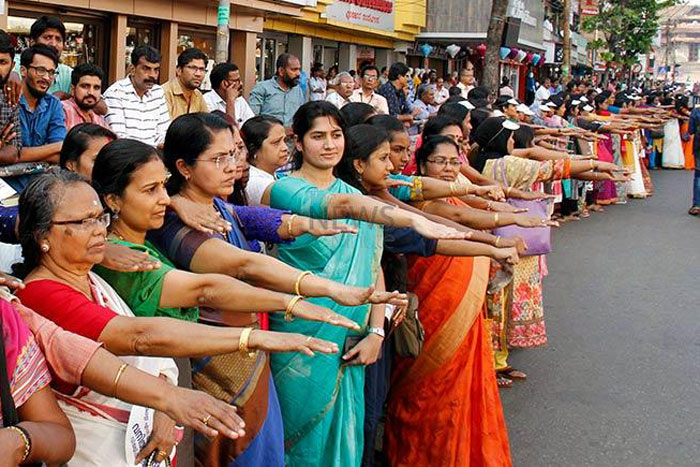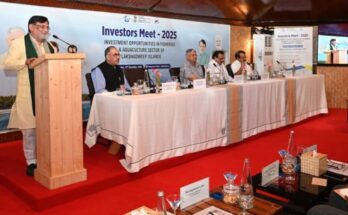By Santosh Kumar Mohapatra
Today is the International Women’s Day. The day marks the occasion to examine the progress in achieving the demands raised by working women more than hundreds year ago. The idea of International Women’s Day was born in the socialist movement in the first decade of the 20th century and to recognise the social contribution of women and press for their demands.
In 1908, 15,000 women especially from the clothing and textile traders marched through New York City demanding shorter hours, better pay and voting rights. In 1910, at the second international conference of working women, which included over 100 women from 17 countries, representing unions and socialist parties, held in Copenhagen, Clara Zetkin, leader of the Women’s Office for the Social Democratic Party in Germany, proposed that every year in every country there should be a celebration on the same day of Women’s Day to press for various demands made by women. This was unanimously approved. The first official celebration of Women’s Day happened on March 17 in 1911 in Austria, Denmark, Germany and Switzerland.
Ever since, the International Women’s Day has been celebrated on March 8 not only to press for demands for gender equality but, importantly, as recognition of the tremendous power that women can exert when they unite. The United Nations designated 1975 as International Women’s Year and the same year it gave official sanction to the International Women’s Day and began sponsoring the International Women’s Day events. All its member countries too started observing the International Women’s Day and women’s group working for change in the status of women in these countries use the International Women’s Day to focus attention on issues about women’s rights and to help push their agenda.
The International Women’s Day is observed in over a hundred countries. In accordance with the broad framework of guidelines of the United Nations, India has been, since 1975, regularly celebrating March 8, as the International Women’s Day.
This year, the International Women’s Day comes on the heels of unprecedented Me Too (or #MeToo) movement, with a large variety of local and international alternative names, against sexual harassment and sexual assault. The theme for the International Women’s Day for 2018 was “Time is Now: Rural and urban activists transforming women’s lives”.
Similarly, this year’s campaign theme of the International Women’s Day is #BalanceForBetter, calling for a gender-balanced world while the normal theme is, “Think equal, build smart, innovate for change”. The theme #BalanceForBetter underpinned by the idea that balances drives a better working world. For years, we have heard that gender inequality must be addressed and gender parity or equality or balance must be achieved to prosper. Gender equality is the idea and situation that women and men are equal. Gender inequality refers to unequal treatment or perceptions of individuals wholly or partly due to their gender. Gender equality, also known as sexual equality, is the state of equal ease of access to resources and opportunities regardless of gender, including economic participation and decision-making.
In a scenario of gender equality, women and men are expected to participate proportionally to their share of the population. The founding United Nations Charter (1945) included a provision for equality between men and women (Chapter III, Article 8). Subsequently, from 1945 to 1975 various female officials within the United Nations and leaders of women’s movements on the global stage attempted to turn these principles into action. The Fourth World Conference on Women: Action for Equality, Development and Peace was the name given for a conference convened by the United Nations during September 4–15, 1995 in Beijing, China.
Gender inequality remains a major impediment to human development. Girls and women have made major strides since 1990, but they have not yet gained gender equity. Women lag behind men. All too often, women and girls are discriminated in many domains, including education, health, labour market opportunities and political representation, which have detrimental impact on development of their capabilities and their freedom of choice. Though a natural difference in the relative physical strengths attributes to gender inequality, it is the patriarchal mindset of people, which is mainly responsible for perpetuation of gender inequality.
The preference for male child as a security in twilight years for parents is major cause of gender inequality and declining female sex ratio. This results in millions of “missing girls” in India, the phrase coined by Amartya Sen. In fact, the United Nations includes gender equality as one of the Sustainable Development Goals—the foundations for a peaceful, prosperous and sustainable world.
However, the United Nations 2018 Global Gender Gap Index indicates that around the world there is still a 32 percent gender gap that needs to be closed across four dimensions such as economic participation and opportunity, educational attainment, health and survival and political empowerment. What is disconcerting is that and at the current rate of change, it will take 108 years to close the overall gender gap and 202 years to bring about parity in the workplace.
These challenges are more evident in India. The alarming news is that India’s gender gap stagnates as India is also ranked 108th in Global Gender Gap Index 2018, same as it was ranked in 2017. India slipped 21 places in Global Gender Gap index to 108 previous years. This inequality is mainly due to the very low economic participation of women in India. In terms of economic participation and opportunity India ranked 142nd down from 139th in last year. Moreover, India continued to rank third-lowest (147th) in the world on health and survival, remaining the world’s least-improved country on this sub index down from 141st of last year.
Hence, in view of present scenario, existing interventions will not suffice to achieve a Planet 50-50 by 2030. Collective action and shared responsibility for driving a gender-balanced world is vital. Innovative approaches that disrupt “business as usual” are central to removing structural barriers and ensuring that no woman and no girl are left behind. Innovation and technology provide unprecedented opportunities, yet trends signify a growing gender digital divide and women are under-represented in the field of science, technology, engineering, mathematics and design. It prevents them from developing and influencing gender-responsive innovations to achieve transformative gains for society.
Hence, it is imperative to examine the ways in which innovation can remove barriers and accelerate progress for gender equality, encourage investment in gender-responsive social systems, and build services and infrastructure that meet the needs of women and girls There is need to promote gender equality at home. Children, who grow up in gender-equitable environments, tend to believe in gender stereotypes less than their peers, who grow up in a gender-inequitable environment It is important for parents to treat girls and boys equally in access to food, sports, education, celebration at birth, etc.
(Mohapatra is an Odisha based columnist and economist)




